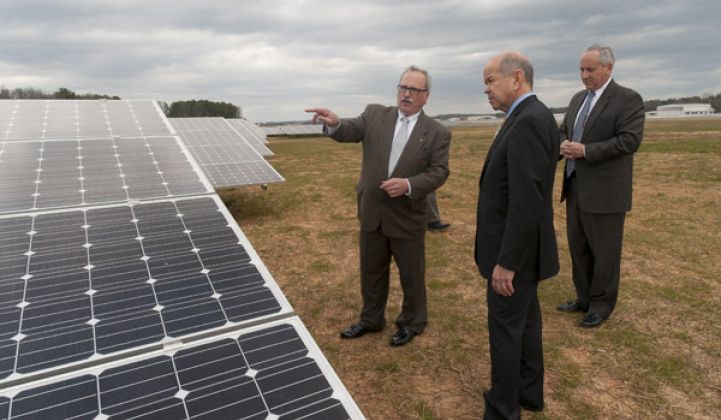The slow death of solar module manufacturer Suniva continues. Last week, Suniva Wanxiang America Corp. joined SQN Capital Management in gaining approval to auction off parts of the company.
In April, a bankruptcy judge gave SQN — which is responsible for the majority of Suniva’s assets — the go-ahead to offload equipment at factories in Michigan and Georgia. Now equipment controlled by Wanxiang will join auctions slated for late May.
According to Jade Jones, GTM Research senior solar analyst, the move to sell off Suniva is an expected one.
“Unlike SolarWorld, which had been actively talking about its outlook for re-ramping capacity and obtaining new financing, there has been a lull from Suniva,” said Jones.
The Trump administration’s 30 percent step-down tariff on imported solar products hasn’t revived business for either of the two Section 201 trade case petitioners. SolarWorld Americas received a lifeline last month, however, when SunPower announced plans to acquire the Oregon-based manufacturer — a move that bails out the SolarWorld brand while bolstering the pro-U.S. manufacturing narrative the administration seeks.
Suniva hasn’t been able to make the same pivot. Now, its equipment is up for sale. And according to Jones, it’s not immediately clear who could be interested in buying it.
“Just because they had the right technology doesn’t mean the equipment they have is the most up-to-date and competitive equipment,” said Jones. “If it were a viable option for some of these big suppliers with capital, I would have thought that something would have happened by now.”
In 2016, Suniva began ramping production of monocrystalline passivated emitter and rear cell (PERC) technology. Jones said that put the company on par with industry advancements, but it wasn’t enough to rival Chinese suppliers with more capacity.
“They had the right technology in mind, but they weren’t competitive with their cost structure," she said.
Equipment for sale includes products from Centrotherm, Ebara and Semilab.
If no viable buyer emerges, the bankruptcy court ruled that creditors including SQN could take over Suniva leases. But a configuration of the company that doesn’t include its dissolution may be unlikely.
Some in the industry argue that SQN backed the trade case to save its investment in the failed company. Turning Suniva around would require more investment.
The rest of the solar industry has begun the post-tariff recovery process. That’s included continued challenges to the tariffs, including recently introduced legislation, as well as coping with the new normal. GTM Research projects tariffs will cut installations 11 percent through 2022.
Though GTM Research analysts assert that the tariffs alone will not drive a U.S. manufacturing renaissance, the initial shock of the announcement has actually given way to a slight boost for U.S. manufacturing.
As noted, SunPower is acquiring the remains of SolarWorld, in attempt to align the company with the Trump administration’s interests. JinkoSolar in March announced a $50 million investment in a facility expected to come online in 2018. First Solar said it will build a 1.2-gigawatt plant slated for late 2019. And though Jones said the timeline for a Panasonic ramp-up remains less clear, the company has already begun work on vertically integrated cell and module facilities with a capacity increase of 1 gigawatt each.
“In terms of Suniva disappearing, the amount of capacity that has been announced and that will ramp in the next few years will far exceed what Suniva had,” said Jones. “And that’s for both cell and module capacity.”




